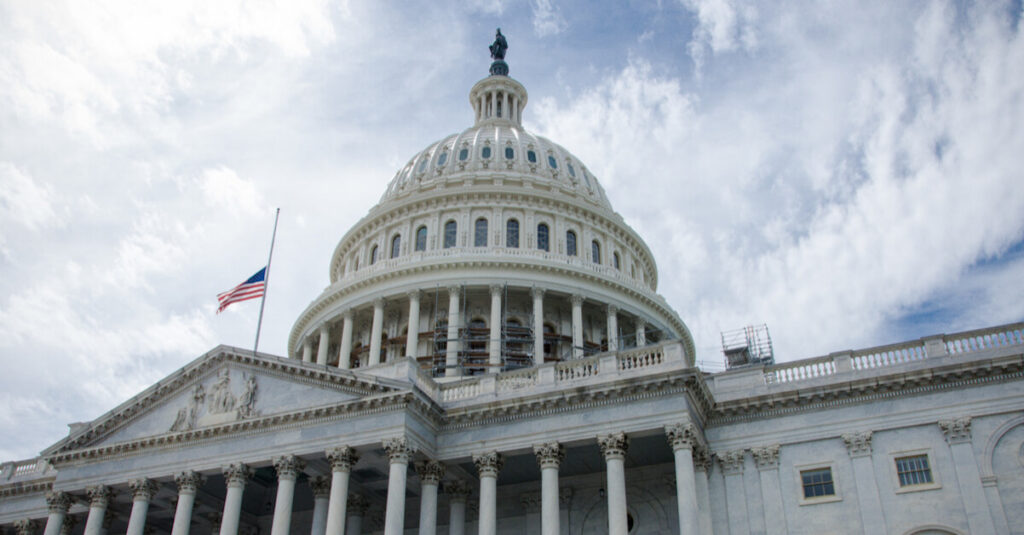
The STABLE Act: What Will It Do and Why Has It Been Proposed?
Lawmakers in the United States (US) have put forward a bill that seeks to regulate the issuance and management of stablecoins. The ‘Stable Tethering and Banking License Enforcement Act’ (which abbreviates to STABLE), would bring stablecoins under the jurisdiction of local and federal regulators, requiring that issuers, such as Tether (USDT), be licensed as well as impose monitoring requirements.
Stablecoins have long been an item of controversy for governments as they represent a challenge to the authority of central banks, whose job it is to maintain a stable currency system. Moreover, lawmakers are concerned that people who rely upon the value of these stablecoins don’t have the same protections they enjoy with a normal fiat currency as there is nobody to ensure the stablecoin issuers maintain reserves.
On this point, some in the crypto-community welcome the proposed rules citing a need for regulatory oversight. Others are concerned that the regulation might hinder innovation in the industry. In this article, we will delve into the detail within the STABLE Act, examining its requirements and implications for stablecoin issuers and crypto-businesses. We will also explore some of the concerns crypto-insiders have with the proposed rules as well as the arguments for the Bill. But first, let’s explore what a stablecoin is.
What is a Stablecoin?

A stablecoin is a type of cryptocurrency that attempts to maintain a pre-specified value, either by having its value pegged to a fiat currency such as the US dollar, or a collection of assets including other cryptocurrencies.
The most popular and oldest stablecoin is Tether (USDT). Launched in 2014, USDT is a stablecoin with a value tethered to the US dollar. It is used as the denomination for nearly every USD-based trading pair on almost every single cryptocurrency exchange, dominating the stablecoin space for most of its 6-year existence. Today, USDT has over $20 billion in reserve with an equivalent amount of USDT in circulation. However, in recent years, a number of competitors have emerged with new ideas on how to achieve stable values.
Stablecoins have played an enormous role in the trading of and access to cryptocurrencies. They are underpinned by both blockchain technology and stable assets or currencies, they provide an ideal way to value and therefore trade or invest in cryptocurrencies whilst also allowing instant, low-cost and secure transactions.
The new proposed regulations
The STABLE Act would regulate the makers of stablecoins. It requires issuers to seek a banking charter which would place them under the jurisdiction of existing banking law. This means the Federal Reserve, Federal Deposit Insurance Corporation (FDIC), and the banking authority in the issuer’s specific state would have to first approve the issuer’s activity.
During this approval process, prospective banks usually go through a number of investigative stages, which stablecoin issuers would also be forced to go through. These include providing detailed information on the organizer(s), the business plan, senior management team, finances, capital adequacy, and risk management infrastructure, in a process that can take more than a year. As many stablecoin projects in the cryptocurrency industry are experimental, stablecoin projects could struggle to meet these rigorous standards.
Moreover, if approved, the Bill would obligate the regulators mentioned above to carry out “ongoing analysis of any systemic risk” the issuer’s stablecoin could pose to the US dollar, a move which could essentially see control of any stablecoin ceded to the authorities.
Finally, the Bill would require stablecoin issuers to maintain reserves or be insured by the FDIC. Putting the onus on the issuer’s control of the currency in this way could quickly put an end to any decentralized stablecoin.
The concerns
Democrat Representative Rashida Tlaib justified proposing the Bill as an attempt to prevent “cryptocurrency providers from repeating the crimes against low and moderate-income residents of color” traditional big banks have committed. On the other hand, many in the cryptocurrency industry believe that the very people the regulations are aimed at protecting may end up being negatively impacted by them.
Notably, Facebook’s Libra (now renamed Diem) was specifically cited as an example. Circle CEO, Jeremy Allaire, told Coindesk that the underbanked had benefited from an enormous amount of innovation, brought by “non-bank fintech companies”. These regulations would be “inconsistent with the goals of supporting innovation in the fair and inclusive delivery of payments that comes from stablecoins” he said. And this is not the end it seems.
The US Financial Crimes Enforcement Network, better known as FinCEN, has recently proposed regulations that would require all US-based exchanges to verify the ownership of cryptocurrency wallets before users can withdraw to them. In an open letter to the regulator, Blockchain Capital venture partner, Ben Davenport, details why these rules would be both ineffective in achieving their goals and damaging with their impact.
However, some within the cryptocurrency community see the regulations in a positive light. They argue that, in the long-run, regulations such as the STABLE Act are an important step towards legitimizing the space, increasing users’ trust in the technology, and encouraging more businesses to explore the potential of the space.
All-in-all, 2020 has been an eventful year for cryptocurrency regulation, as governments have taken an unprecedented interest in the industry’s technology and the impact the industry is having in their countries. Both the STABLE Act and FinCEN regulations are the culmination of this interest and will likely set the stage for oversight in 2021.
To stay up to date on all things crypto, like Xcoins on Facebook, follow us on Twitter and enter your email address at the bottom of the page to subscribe.

